I have followed the documentation provided for the Python comtypes module (http://pythonhosted.org/comtypes/server.html) and built a simple COM server.
It seems to be working correctly. I can see that the typelib and interface are registered (using Oleviewer) and from a Python script I can call the (single) method that adds two integers.
However, I cannot make it work with Excel (Office 2007, running on Win7). The following simple function does not work (execution stops when MyMethod is called)
Function test(a, b)
Dim x As New MyTypeLib.MyObject
ab = x.MyMethod(a, b)
Debug.Print "d" & CStr(ab)
test = ab
End Function
Is there any way to debug this?
More comments
There is indeed light at the end of the tunnel. The suggestion to use VBScript has been helpful. The following short script does work (providing independent confirmation that the COM server works).
Dim x,ab
Set x = CreateObject("MyTypeLib.MyObject")
ab = x.MyMethod(1, 2)
MsgBox CStr(ab)
However, VBScript is calling the server using late binding and I was trying to get the early binding to work.
So, I changed my Excel VBA function to use late binding and expected things to work, but they do not.
Here is the modified VBA:
Function test(a, b)
Dim x As Object
Set x = CreateObject("MyTypeLib.MyObject")
gadd = x.MyMethod(1, 5)
End Function
So my server can be used with late binding from Python and VBScript, but not Excel!
Using Process Monitor I can see that in both late and early binding cases Excel tries unsuccessfully to load msvcr90.dll, even though this DLL is installed on the system.
Here is a screenshot from Process Monitor, showing where Office Excel 2007 on 64-bit Windows 7 Home Edition starts to try to load msvcr90.dll
